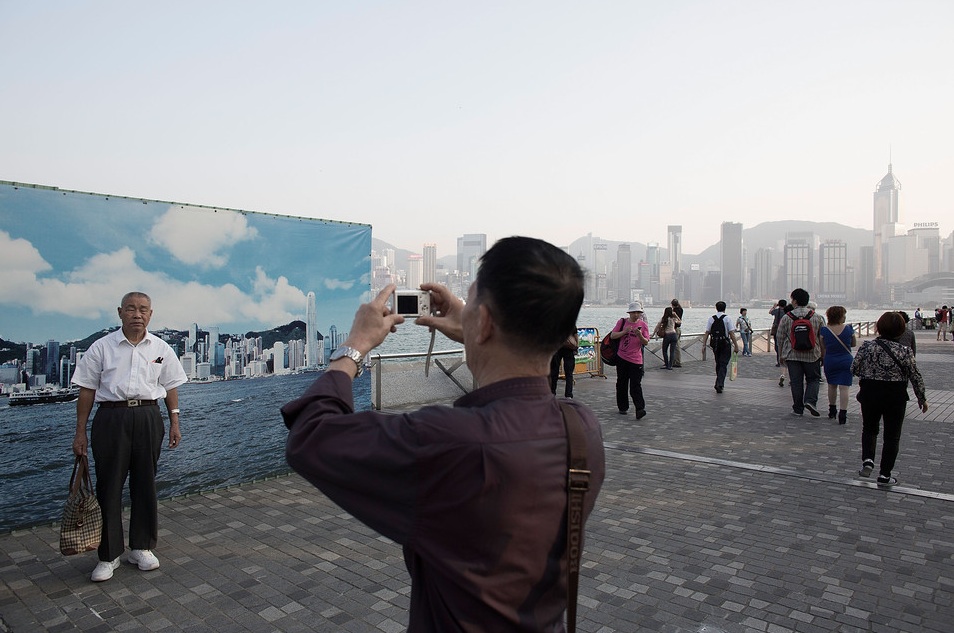We live in an age of Photoshop, where the even the slightest adjustment to a photograph can call forth charges of dishonesty and all sorts of teeth gnashing and acrimony. And at the same time, as this photograph suggests, there is a part of us that appreciates the power of the art of photography to remake the world the way we want it to be, even if it is something of a fantasy and we know it. You wait your whole life to visit Hong Kong and you want a picture for the family photo album to prove that you were there that is worthy of the effort, one with blue skies and puffy cumulous clouds, not a haze filled skyline that casts a scrim like veil over the city that casts everything in grey scales. And what is wrong with that anyway?
The photograph above does not answer this question, but it does help to identify the problem that it poses. As we frequently note at NCN, one of the chief things that photographs do is to put the habits of social and civic life on display for reflection; and because these are habits of everyday life we tend to see them literally as normal, more or less natural and, as a result, altogether unremarkable features of an image. So it is that one might focus on the man taking the photograph and see nothing that is particularly noteworthy, as do most of the other people in the image who pass by without so much as a notice. And the reason for this would be patent, for what we are seeing is precisely the habit of casting and controlling our memories for posterity, and in particular how natural it seems to be—indeed, I suspect that many of us can imagine ourselves doing something similar given comparable circumstances—even as it stands in stark contrast to what we know the truth of the matter to be.
And there, I believe, is the rub, for what the photograph above also features is the contrast between the memory we produce that exists within the frame of the image that is preserved for posterity—here the photograph we see being taken that we can only imagine in all of its bright colors—and what occurs outside of that frame in the haze-tinted smog of the real Hong Kong. It would be easy, of course, for us to assume that such a problem applies only to snapshot photography and the conventions of crafting and preserving family photo albums where the primary goal is the production of a nostalgic and happy memory for subsequent generations. But that would be an error, for every photograph, amateur or professional, analog or digital, black and white or in living color are subject to the same constraints. That does not mean that we should reject the “truth” of the image, but it does mean that we should recognize that the truths that we see are always partial and that the meaning of any image is subject to change as we extend the dimensions of the frame we are enabled to see.
This is something we all know. In its own way it points to an attitude that is something of a habit of modern life. And in that context the virtue of this photograph is how it puts this habit on display as both a reminder and a site of reflection concerning its importance.
Photo Credit: Lam Yik Fei/Getty Images

Discussion